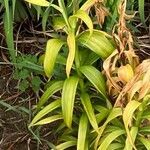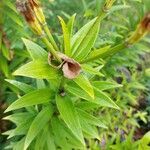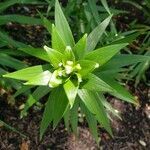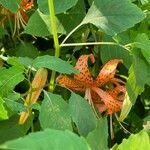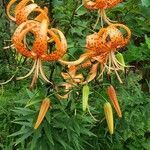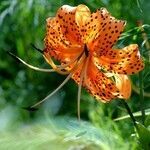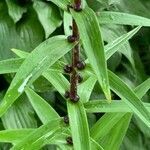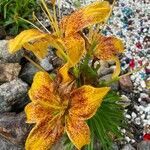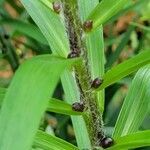Stem stout, 6–12 cm, cobwebby especially above; lvs very numerous, alternate, linear to narrow lanceolate, sessile, the upper rounded and clasping at the base and with axillary bulblets, the lower 10–15 cm, fls several in a raceme, the stout, widely divergent pedicels subtended by small lvs; tep recurved, orange-red with many purple-brown dots, 7–10 cm, bearing a pubescent strip basally within; 2n=24, 36. Native of e. Asia, often escaped from cult. about dwellings and on roadsides in our range. July, Aug. (L. tigrinum)
A bulb plant. It grows 90-180 cm high and 20-25 cm wide. It roots from the stem. It produces bulblets in the axils of the leaves. The flowers are reddish orange and heavily spotted. The stems are downy. There can be 25 flowers on a stem.
